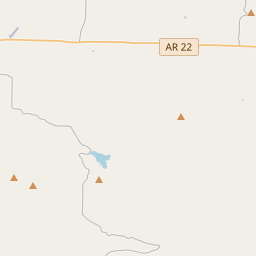Steamboats - Power on the River
Historical marker location:
1469 Lock and Dam Rd, Russellville, Arkansas
( Marker can be reached from Lock and Dam Road (Highway 7) west of Sheppard Drive.)







© OpenStreetMap contributors
Arkansas was one of the first states in the U.S. to enact a statewide prohibition on the sale and consumption of alcohol, passing the law in 1915. Prohibition was repealed in the state in 1933, shortly after the end of the nationwide prohibition era.
About Pope County
Pope County Timeline
Pope County, Arkansas has a rich history that dates back to prehistoric times. The area was originally inhabited by various Native American tribes, including the Caddo, Osage, and Cherokee, who relied on the abundant natural resources of the region. In the early 19th century, European settlers began to arrive in the area, primarily attracted by the fertile land and opportunities for farming. The county was officially established on November 2, 1829, and named after John Pope, the third territorial governor of Arkansas.
During the Civil War, Pope County was deeply divided, with residents siding with both the Union and the Confederacy. The Battle of Dardanelle, fought in 1864, was a significant event in the county's history. Union forces ultimately defeated the Confederates and gained control of the Arkansas River, securing Pope County for the Union. After the war, the county began to rebuild and experienced growth in its agricultural and manufacturing sectors.
In the early 20th century, Pope County saw advancements in transportation and infrastructure, including the construction of highways and railroads that connected the area to larger cities. This facilitated trade and boosted economic development. The county also became a popular tourist destination due to its natural beauty, including the Ozark National Forest and Lake Dardanelle.
In recent years, Pope County has continued to grow and diversify its economy. The county's population has increased, and it has become a hub for retail, healthcare, and education. Despite its growth, Pope County has maintained its rural charm and commitment to preserving its natural beauty, making it an appealing place to live and visit.
During the Civil War, Pope County was deeply divided, with residents siding with both the Union and the Confederacy. The Battle of Dardanelle, fought in 1864, was a significant event in the county's history. Union forces ultimately defeated the Confederates and gained control of the Arkansas River, securing Pope County for the Union. After the war, the county began to rebuild and experienced growth in its agricultural and manufacturing sectors.
In the early 20th century, Pope County saw advancements in transportation and infrastructure, including the construction of highways and railroads that connected the area to larger cities. This facilitated trade and boosted economic development. The county also became a popular tourist destination due to its natural beauty, including the Ozark National Forest and Lake Dardanelle.
In recent years, Pope County has continued to grow and diversify its economy. The county's population has increased, and it has become a hub for retail, healthcare, and education. Despite its growth, Pope County has maintained its rural charm and commitment to preserving its natural beauty, making it an appealing place to live and visit.
Pope County Timeline
This timeline provides a glimpse into the major events and milestones that have shaped the history of Pope County, Arkansas.
- Pope County was established on November 2, 1829.
- In 1830, the county seat was established in Dover.
- In 1865, during the Civil War, the Battle of Dardanelle took place in Pope County.
- In 1873, the Little Rock and Fort Smith Railroad was completed and passed through Pope County.
- In 1909, Arkansas Polytechnic College (now Arkansas Tech University) was established in Russellville.
- In 1957, Lake Dardanelle was created by the completion of the Dardanelle Lock and Dam.
- In 1962, the Hector School District was established in Pope County.
- In 2000, the population of Pope County was approximately 54,469.
- In 2010, the population of Pope County was approximately 61,754.